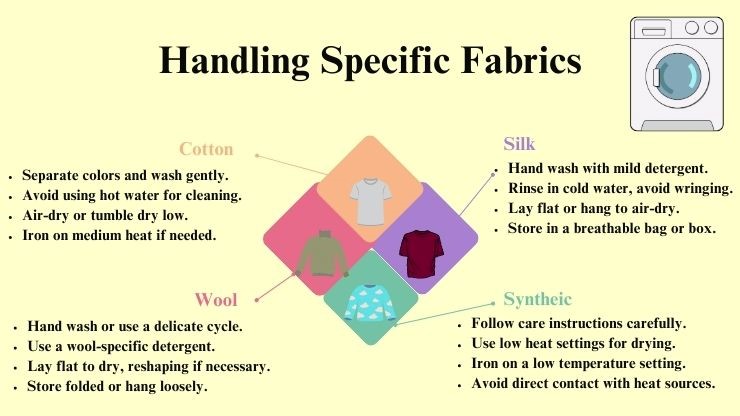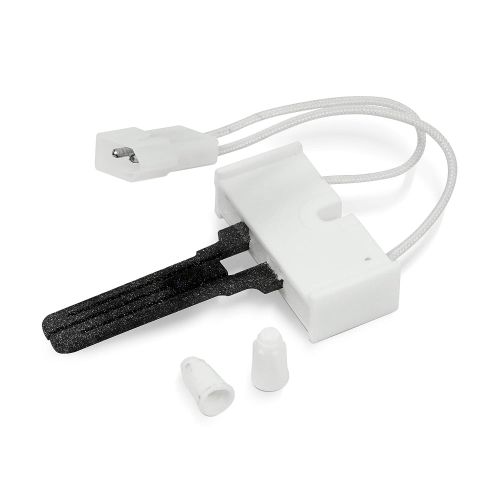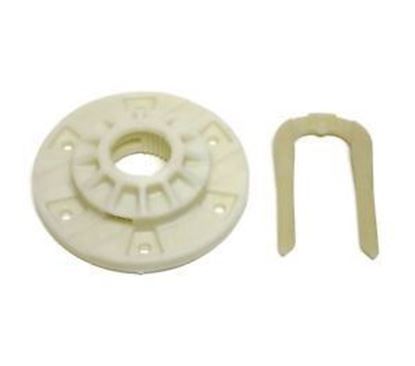
Preventing Clothes from Shrinking: 5 Key Tips
Maintaining the perfect fit of our favorite clothes is essential for both comfort and style. Unfortunately, many of us have experienced the frustrating phenomenon of clothes shrink in wash. Whether it's a favorite sweater, a cherished pair of jeans, or a delicate blouse, the consequences of shrinking can be disheartening. That's why knowing how to prevent clothes from shrinking is crucial for preserving our wardrobe investments.
In this article, we will explore five essential tips to help you safeguard your garments from shrinkage. By implementing these strategies, you can extend the lifespan of your clothing, save money on replacements, and ensure that your wardrobe continues to fit you just right.
| Table of contents: What causes clothes to shrink? How to keep clothes from shrinking? Handling Specific Fabrics Following Good Laundry Practices Additional Preventive Measures |
What causes clothes to shrink?
There are various factors that can cause clothes shrink in wash. Understanding these causes can help you prevent shrinkage and maintain the size and fit of your garments. Here are the four main processes that contribute to clothing shrinkage: felting, relaxation, consolidation, and contraction. You should maintain your dryer in good condition and if needed use the best quality replacement parts for dryer that are genuine.
|
Shrinkage Type |
Common Fabrics |
What causes clothes shrink in wash |
|
Felting Shrinkage |
Wool, Mohair |
Collapse and meshing of microscopic scales in animal hair fibers when exposed to moisture and heat. |
|
Relaxation Shrinkage |
Wool, Cotton |
Fabrics with organic yarns or naturally curly fibers recover their shape. |
|
Consolidation Shrinkage |
All Fabrics |
Mechanical beating during washing and drying compresses the fabric. |
|
Contraction Shrinkage |
Cotton, Wool |
High heat in the dryer forces out moisture, causing fabric to shrink. |
How to keep clothes from shrinking?
Taking proper care of your clothes is essential to ensure they maintain their original size and fit. Here are five tips to help you prevent your favorite garments from shrinking:
Tip 1: Check fabric care labels before buying and laundering
Before purchasing new clothing, always check the fabric care labels to understand the recommended care instructions. Pay attention to the fabric type, as certain materials like cotton or linen are more prone to shrinking. If the garment is labeled as "dry clean only," avoid washing it in a machine. Additionally, follow the recommended water temperature, laundry cycle, and drying instructions. Typically, washing clothes in cold water and using a gentle cycle with low-heat drying can help prevent shrinking clothes.
Tip 2: Use cold water and appropriate wash cycles
To minimize the risk of shrinking, make it a habit to wash your clothes in cold water. Hot water can cause fibers to contract, resulting in shrinkage. Additionally, avoid using heavy-duty cycles, fast spins, and high-heat drying settings. Instead, opt for delicate cycles and consider placing delicate items in a mesh laundry bag for added protection. Always refer to the care tag instructions for specific washing guidelines.
Tip3: Select the tumble dry or air dry setting
When drying your clothes, choose the tumble dry or air dry setting on your dryer. These options minimize the wear on fabric fibers and reduce the chances of shrinkage. Refer to the care tag for the recommended temperature and dryer settings to prevent shrinkage. Dryer thermal fuse maintains the dryer settings.
Tip 4: Avoid over drying
Overdrying your clothes can damage the fabric and lead to shrinkage. It's important to avoid exposing your garments to long cycles of high heat. Instead, opt for shorter intervals of tumble drying or air drying to preserve the integrity of the fabric.
Tip 5: Consider air drying
Air drying your clothes is an effective way to prevent shrinking. Rather than using a dryer, hang your clothes on a clothesline or drying rack to allow them to naturally air dry. This method is gentle on the fabric and helps maintain the original size and shape of your garments.
Handling Specific Fabrics
When it comes to preventing clothes shrink in wash, it's crucial to understand the specific care requirements of different fabrics. Each fabric has its own characteristics and demands, and knowing how to handle them properly can help maintain their shape and size.
Here are the precautions and care guidelines for cotton, wool, silk, and synthetic fibers:

Know about the Most common washing Machine problems and solutions.
Following Good Laundry Practices
Taking care of your clothing properly is essential to ensure their longevity and maintain their appearance. By following good laundry practices, you can keep your garments in excellent condition. Here are some important points to keep in mind to avoid shrinking clothes:
Follow the directions on the tags of your garments
The washing and drying instructions provided on the tags are specific to the materials used in your clothing. These instructions are meant to guide you on how to care for your garments appropriately. Pay attention to the recommended water temperature, washing cycle, and any special instructions such as avoiding bleach or using a gentle detergent. By following these directions, you can prevent damage and maintain the quality of your clothes.
Sort clothing by fabric type
Before washing your clothes, it's important to sort them by fabric type. Start by grouping your garments by color, as this will prevent color bleeding. Additionally, separate your cotton, linen, and silk garments from other fabrics as they require more delicate care. Washing these materials separately will help avoid shrinking, pilling, or other damage that can occur when different fabrics rub against each other in the wash. To make sorting easier, consider having a separate hamper or designated area for clothes that require special attention.
Remove laundry from the dryer immediately
Once your laundry is done drying, it's best to remove it promptly. This practice prevents excessive wrinkling, reducing the need for ironing or using the permanent press setting on your dryer. If you're unable to retrieve your clothes right away, you can employ a simple trick to minimize wrinkles. Toss a damp rag into the dryer and run it for 5-10 minutes. The moisture will create steam, which helps to release the wrinkles more easily when you eventually remove the clothes.
Read our Guide to the most common parts of Washing Machine.
Additional Preventive Measures
In addition to the basic tips for avoiding shrinking clothes, there are a few more preventive measures you can take to safeguard your garments. By following these additional tips, you can further minimize the risk of shrinkage and keep your clothes looking their best for longer.
Pre-treating and testing fabrics before washing
Certain fabrics, such as wool or delicate silk, are more prone to shrinkage. To minimize this risk, it's advisable to pre-treat and test these fabrics before washing them. Pre-treating involves spot-cleaning stains or treating heavily soiled areas before subjecting the entire garment to water and detergent. Additionally, it's a good practice to test a small, inconspicuous area of the fabric with water or a mild detergent to see how it reacts. If you notice any adverse effects, like excessive shrinkage or discoloration, it's best to seek professional cleaning or take extra precautions when washing the garment.
Avoiding excessive agitation and harsh chemicals
Aggressive washing methods, such as vigorous scrubbing or using harsh chemicals, can contribute to fabric shrinkage and also can cause damage to the Dryer Cabinet. To prevent this, choose a gentle washing cycle or hand wash delicate items. If you're using a washing machine, consider using a garment bag or turning the clothes inside out to reduce friction and protect the fibers. Additionally, opt for mild, pH-neutral detergents specifically formulated for delicate fabrics. Harsh chemicals, including bleach and strong stain removers, should be avoided as they can weaken the fabric and lead to shrinkage.
Proper drying techniques
While air-drying is the safest method to prevent shrinkage, it's essential to do it correctly. Lay your garments flat on a clean, absorbent towel or a drying rack, ensuring they are in their original shape. Avoid hanging heavy or wet clothes, as the weight can stretch the fabric and cause distortion. If you must use a dryer, opt for the lowest heat setting or a delicate cycle. Keep in mind that excessive heat can cause shrinkage, so monitor the drying process closely and remove the clothes promptly once they are dry.
In order to prevent clothes from shrinking and maintain their original fit, it's important to follow a few essential tips. From proper washing techniques to correct drying methods, this article provides valuable insights and practical advice.
FAQs
What is the best dryer setting to avoid shrinking?
The best dryer setting to avoid shrinking is to use a low or delicate heat setting. High heat can cause fabrics to shrink, so opting for a cooler temperature will help preserve the size and shape of your clothes.
Why are my clothes shrinking in the dryer?
Clothes can shrink in the dryer due to the combination of heat, agitation, and moisture. When exposed to high temperatures and tumbling, certain fabrics may shrink, especially if they are not labeled as shrink-resistant or pre-shrunk.
Does cold water shrink clothes?
Cold water alone does not typically cause clothes to shrink. Hot water can cause fabrics to shrink due to the heat, but cold water is generally safe for most garments and helps prevent shrinkage.
Do clothes shrink in the washer or the dryer?
Clothes are more likely to shrink in the dryer than in the washer. The high heat and tumbling action in the dryer can cause fibers to contract and result in shrinkage. It is recommended to check the care labels and follow the instructions to minimize the risk of shrinking.
How to reverse shrinking clothes?
To reverse shrinking clothes, you can try soaking them in lukewarm water with a fabric conditioner or baby shampoo. Gently stretch and reshape the garment while damp, then lay it flat to dry. Alternatively, you can also take the item to a professional cleaner who may be able to restore its original size. However, it's important to note that not all clothes can be successfully unshrunk.
Does hot water shrink clothes?
Hot water can cause clothes to shrink, especially if they are made from certain materials like cotton or wool. It is recommended to wash clothes in cold water to prevent shrinking and preserve their original size.











